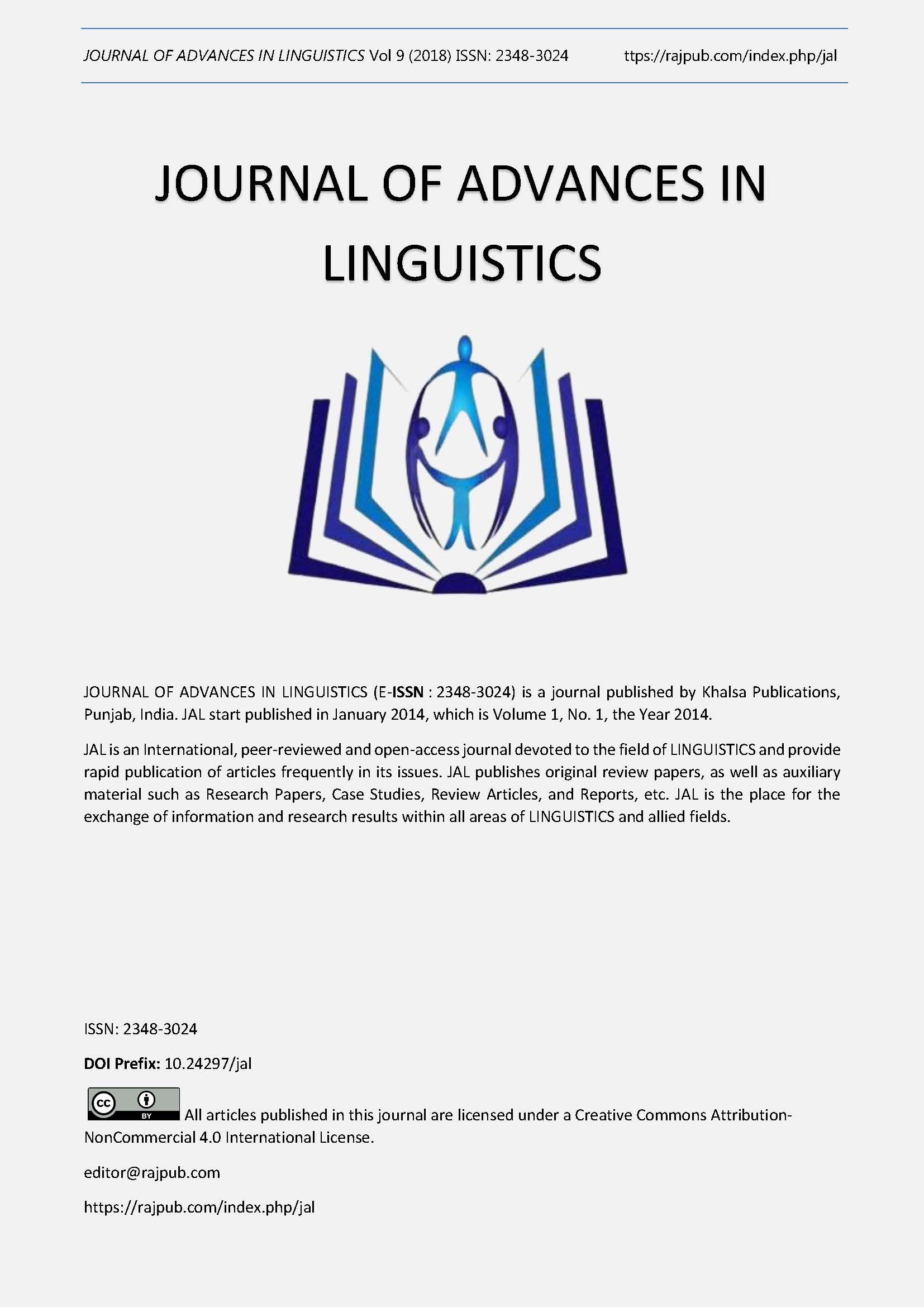The Semantic Comprehension of Persian Endocentric and Exocentric Compounds in non-Persian Speakers
DOI:
https://doi.org/10.24297/jal.v9i0.7351Keywords:
Comprehension, Compound noun, Endocentric, Exocentric, Persian-language learnerAbstract
Semantic comprehension of Persian compound nouns in non-Persian speakers of TPSL department was investigated using a cognitive-semantics approach. Regarding the semantic relationships between the bases of compound nouns, two were selected based on presence or lack of semantic head. Then, sufficient data were collected from different texts through a desk research method to make a frequency dictionary of endocentric and exocentric compound nouns based on the knowledge level of students. A definition-word pairing test was then selected and most frequent compound nouns (24 compound nouns) were identified and used for the test, developed and run in the form of an application for smart phones by an application developer and participants were provided with it. Overall, 888 data were collected from the test results and analyzed using standard statistical tests suggesting that due to presence of semantic head in endocentric compounds, speed and level of comprehending them was higher than exocentric compounds; moreover, a correlational relationship between comprehension of these compounds was identified. Therefore, the relationship between components of endocentric compounds was understood faster than exocentric compounds. Thus, applicability of CARIN theory was verified.
Downloads
References
Amirghasemi, M. (2001). Persian Encyclopedia for Kids and Teenagers. Tehran: Dadar.
Anvari, H. (2003). Sokhan Compact Dictionary. Tehran: Sokhan Publication.
Badakhshan, E. & Judaki, F (2011). Semantic Transparency and Opacity in Compound Nouns (Non-verbal element and present stem). Quarterly Scientific-Research Journal of Persian Language and Literature. School of Foreign Languages and Literature, Islamic Azad University of Sanandaj, the 3rd year, No. 8.
Bauer, L. (1993). English Word Formation. Cambridge: Cambridge University Press. ISSN: 2348-3024 Volume: 09 Issue: 01 Journal of Advances in Linguistics 1370
Benczes, R. (2013). On the non-viability of the endocentric–exocentric distinction: Evidence from linguistic creativity. EXELL (Explorations in English Language and Linguistics. 1.1 (2013): 3-18.
Gagne, C. L. & Shoben E. J. (1997). The Influence of Thematic Relations on the Comprehension of modifier– noun combinations, Journal of Experimental Psychology: Learning, Memory, and Cognition, No. 23
Gagne, C. L & Spalding T. L. (2004). Effect of relation availability on the interpretation and access of familiar noun–noun compounds. Brain and Language 90 (2004) 478–486.
Haspelmath, M. (2002). Understanding Morphology. London: Arnold.
Karimi Doostan, Q. and Vahid, A. (2013). Semantic Analysis of Noun- Noun Compounds in Persian Language. Linguistics Research, the 5th Year, No. 1, 65-82.
Katamba, F (1993). Morphology, Macmillan: Macmillan Press LTD.
Lieber, R. (2009). Introducing Morphology. Cambridge University Press.
Sabzevari, M. (2009). Semantic Combinability in Modern Persian Compound Nouns. Ph.D. Thesis. Tehran: Institute for Humanities and Cultural Studies.
Sabzevari, M. (2012). Semantic Transparency and Opacity in Persian Compound Nouns from a Cognitive Perspective. Quarterly of Language Inquires, 4th , No. 3 (Serial 15), 55-73.
Sabzevari, M. (2012). Explaining and Analyzing Semantic Relationships in Standard Persian Exocentric Compound Nouns. Critical Research Journal of Human Science Texts and Plans, Institute for Humanities and Cultural Studies. The 12th Year, No. 1, 45-61.
Sabzevari, M. (2016). Investigation of Meaning Formation and Inference of Conceptual Patterns in Persian Endocentric Compound Nouns. Quarterly Scientific- Research Journal of Linguistics Research. Alzahra University.
Scalise S. et al. (2009). Exocentricity in Compounding, Gengo Kenkyu, 135: 49–84.
Shaghaghi, V. (2007). An Introduction to Morphology. Tehran: Organization of Studies and Compilation of Books in Humanities Science for Universities (SAMT).
Shaki, M. (1964). A Study on Nominal Compoundsin Neo-Persian. Praha: Nakladatelstvi, Cekoslovenske VED.
Shokri, G. (2003). Encyclopedic Dictionary of Dabestani. Tehran: Institute for Humanities and Cultural Studies.
Sotude, Q., Mehraki, I. and Soltani, A. (2006). Dictionary: Intermediate Dehkhod Dictionary. Tehran: University of Tehran Publication.
Tabatabayi, A. (2003). Compound Nouns and Adjectives in Persian Language. Tehran: University Publication Center.
Tehranisa, S.A. (1987). A Syntactic and Semantic Analysis of Compound Nouns in Persian. Ph.D Dissertation. University of Michigan.
Downloads
Published
How to Cite
Issue
Section
License
 All articles published in Journal of Advances in Linguistics are licensed under a Creative Commons Attribution 4.0 International License.
All articles published in Journal of Advances in Linguistics are licensed under a Creative Commons Attribution 4.0 International License.




